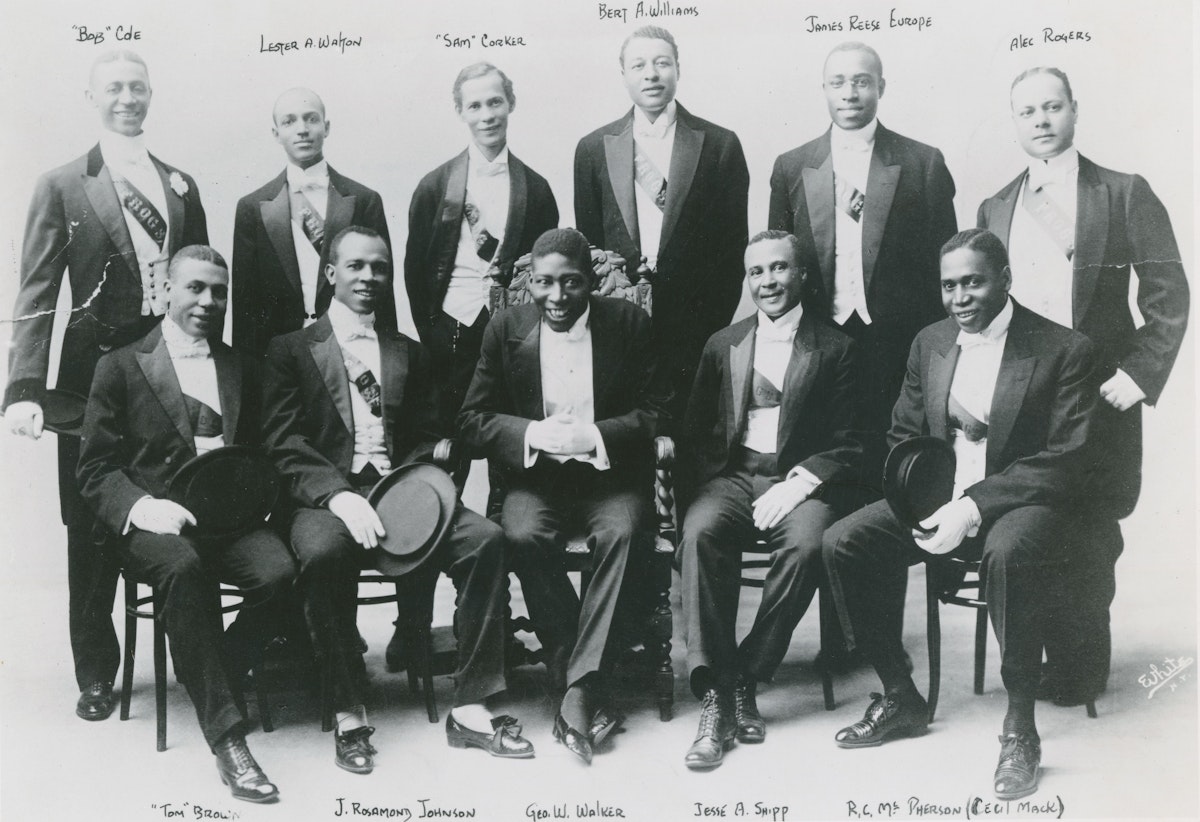
We are all unfortunately immersed in the visual legacy of Blackface minstrelsy. Caricatures that mutated Black men into creatures, women into mockeries — offensive ornamentation designed to highlight a lascivious, criminalized otherness. One of the key ways these racist imaginaries seeped into the Western subconscious was through the proliferation of print material, and particularly through the covers of sheet music brought home to play around the parlor piano. These images appeared on music written by both Black and white artists, as the standard of presentation. And yet, beginning in 1905, one star-studded song-publishing company would push the aesthetic limits of how Black popular music was shown to the public.
Throughout the mid-to-late-nineteenth century, popular music traveled from stage to page via publications featuring songs written and performed by white performers who blackened their faces with burnt cork to transform into living racial stereotypes. The covers of these publications often featured cartoonish drawings of these racist figures, and as the century moved onward, photographs of the performers in and out of Blackface, illustrating the depth of their transformation. By the early twentieth century, the genre had reached a bizarre space. African Americans were allowed to perform on the popular stage, but often only if they too painted themselves a shiny Black.
The path to self-determination on the musical stage came in fits and starts, with some broad-brush overviews attributing the major breakthrough to the 1921 music Shuffle Along. The first two decades of the twentieth century, however, were marked by conflicted attempts to balance a public demand for established ethnic characterization with the desire for authentic self-expression. A lesser-known attempt that encapsulates this incongruity is the 1905–1911 run of the Gotham-Attucks Co., a song-publishing company managed by some of the most famous Black writers and performers of the day.
In the August 12, 1905 issue of the controversial Black newspaper The Broad Ax, under the headline “News and Comment from our Yankee Metropolis”, the New York beat reporter covered the merger of two smaller music concerns and the opening of Gotham-Attucks in “elaborate and cleverly appointed headquarters” on 42 W 28th St. The article lists a who’s who of Black entertainment as taking leadership in the new company, with performing duo George Walker and Bert Williams as president and vice president, and with collaborators Earle Jones, R.C. McPherson (Cecil Mack), Alex Rogers, and Jesse Shippe as part of the team. Most, if not all, of these men would be household names to anyone interested in popular entertainment at the time. All of them had written lyrics, music, or starred on the covers of sheet music published by other firms, and many were visually represented in racist manners, often out of their control.
